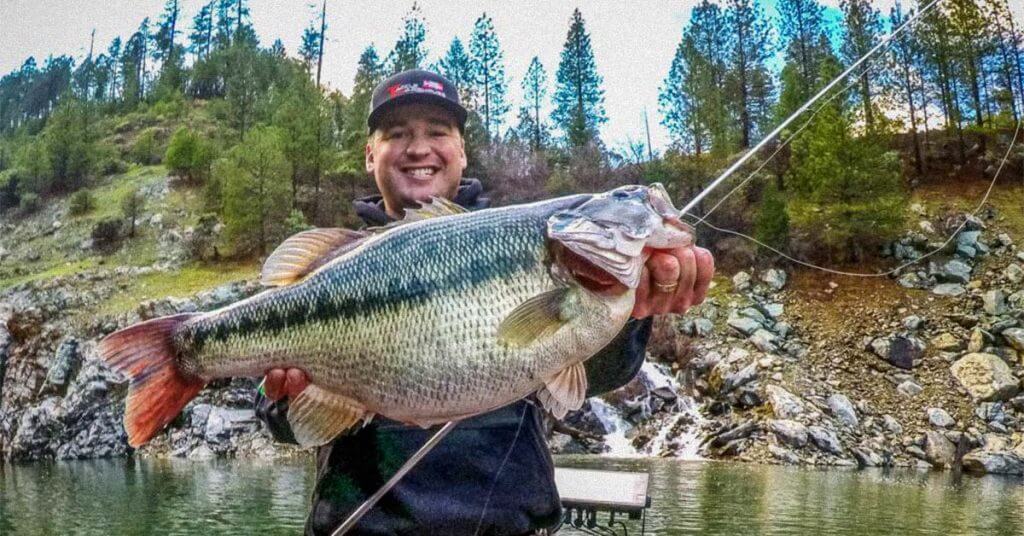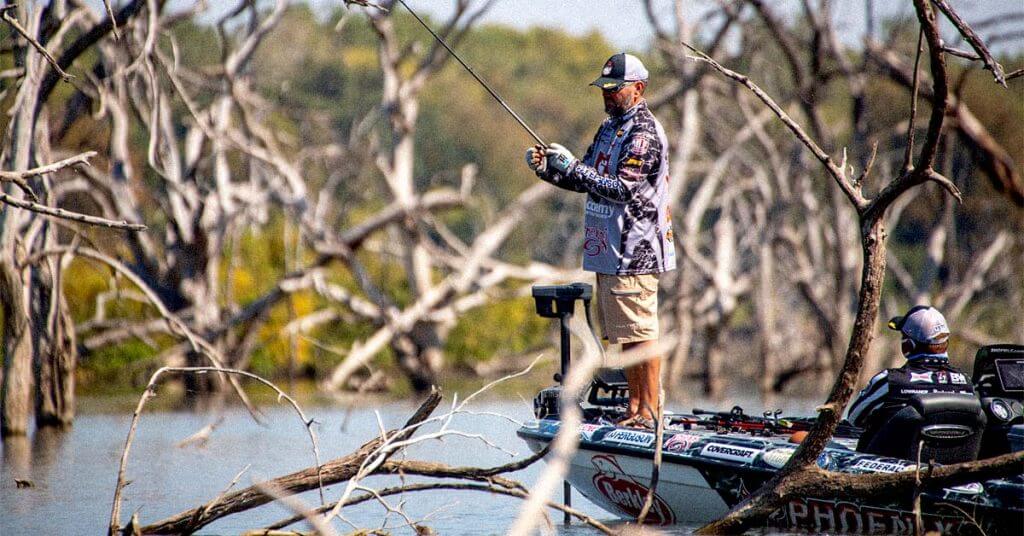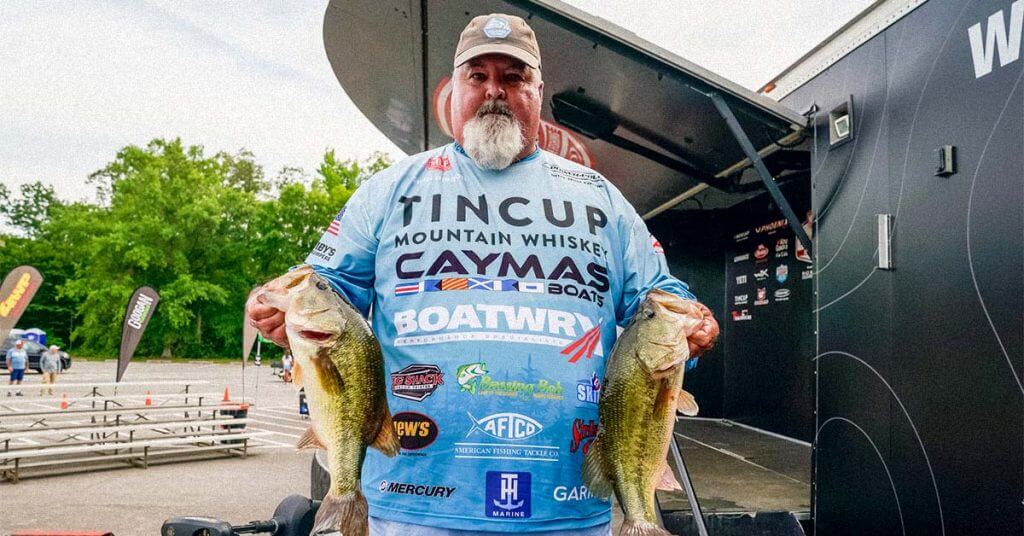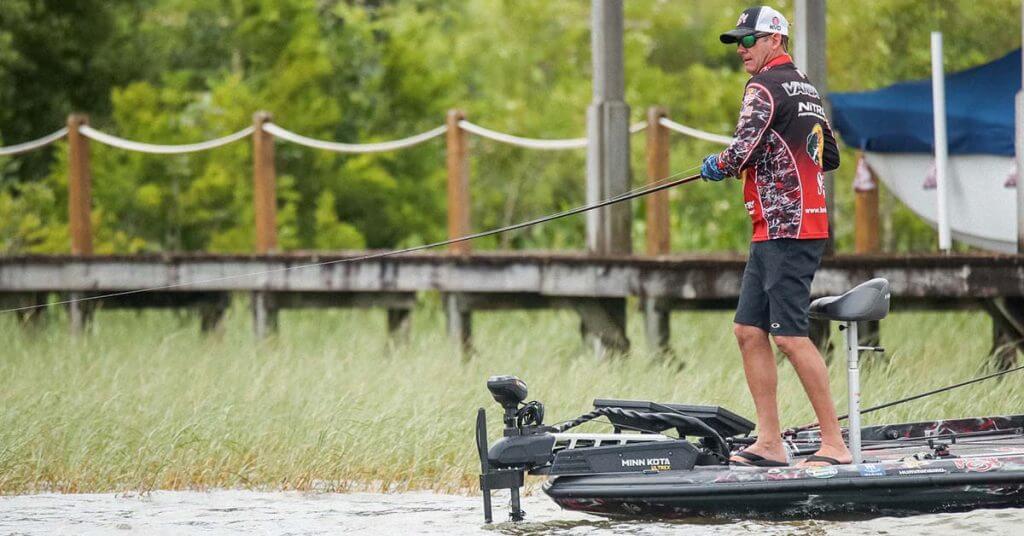When Josh Bertrand talks about his love of bass fishing; he often mentions a big one that didn’t get away.
He was 13 at the time, walking a topwater bait across the surface of a lake in his home state, Arizona. It wasn’t a textbook day to use a surface lure. It was way past prime time, he recalls.
But Bertrand was too young to pay attention to standard fishing tactics, so he used the topwater bait anyway.
As he paused the lure, it disappeared in a giant swirl, and Bertrand set the hook. A few minutes later, he landed a 12-pound largemouth, the fish of a lifetime.
“It was way too late in the year to be using that type of bait, but I didn’t know any better, and neither did the fish,” said Bertrand, a star on the Major League Fishing Bass Pro Tour.
Bertran credits that bass with the spark that ignited a career in guiding and professional fishing.
He considers himself a product of his environment. He grew up on Arizona reservoirs where the deep, clear water harbors big largemouths that are extremely challenging to catch.
He didn’t match that 12-pound bass that he caught as a teenager until many years–and many casts–later.
By that time, he had developed reliable patterns to fish offshore and catch bass that either related to deep structure or where they were suspended in the water column.
That launched a career first as a guide and later as one of the top tournament pros.
We’ll look at how Bertrand applies what he learned in Arizona, his reputation as one of the best drop-shot fishermen in the nation, and how he takes advantage of a bass’s senses to catch the big ones.
So let’s head to the land of deserts, cacti, eternal sun, and big bass and check in with Josh.
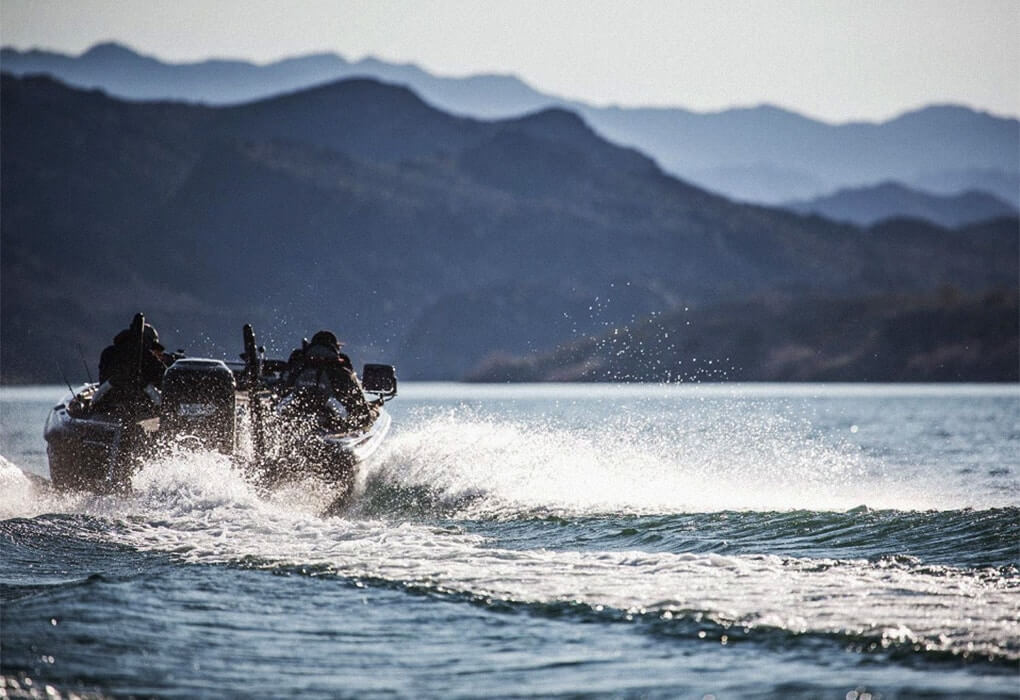
Josh Bertrand learned how to fish for bass in the West (photo by Matt Pace/Major League Fishing)
Arizona’s Tough Bite
Oh, yeah, there are big bass living in Arizona. But good luck trying to catch them.
“Our lakes are good, but there’s a lot of dead water,” said Bertrand, 34, who lives in Queen Creek, Arizona. “It’s a very specific type of fishing.
“When I was younger, I read a lot of fishing magazines and watched many TV shows, but that didn’t mean I could go out and use those methods to catch bass on our lakes.
With our deep, clear water, our lakes are very different than most places. My dad and I struggled to figure them out at first.”
That changed when the Bertrands met some veteran fishermen who helped them out. “They definitely sped up our learning curve,” Josh said.
The Bertrands learned that off-shore fishing was critical in this environment. They learned to catch bass with a drop-shot rig and other baits on deep structure and started consistently catching bass.
Josh started fishing tournaments when he was 15 and began guiding when he was 18.
He quickly earned a reputation for catching bass at lakes such as Roosevelt, Pleasant, and Saguaro, and his reputation grew.
Meanwhile, he became one of the top fishermen in the West and carried that reputation over when he traveled east to compete on the national bass trails – first B.A.S.S. and now Major League Fishing.
Many years after he caught that 12-pound largemouth as a teenager, he caught another on Lake Saguaro on his signature method–fishing a drop shot rig.
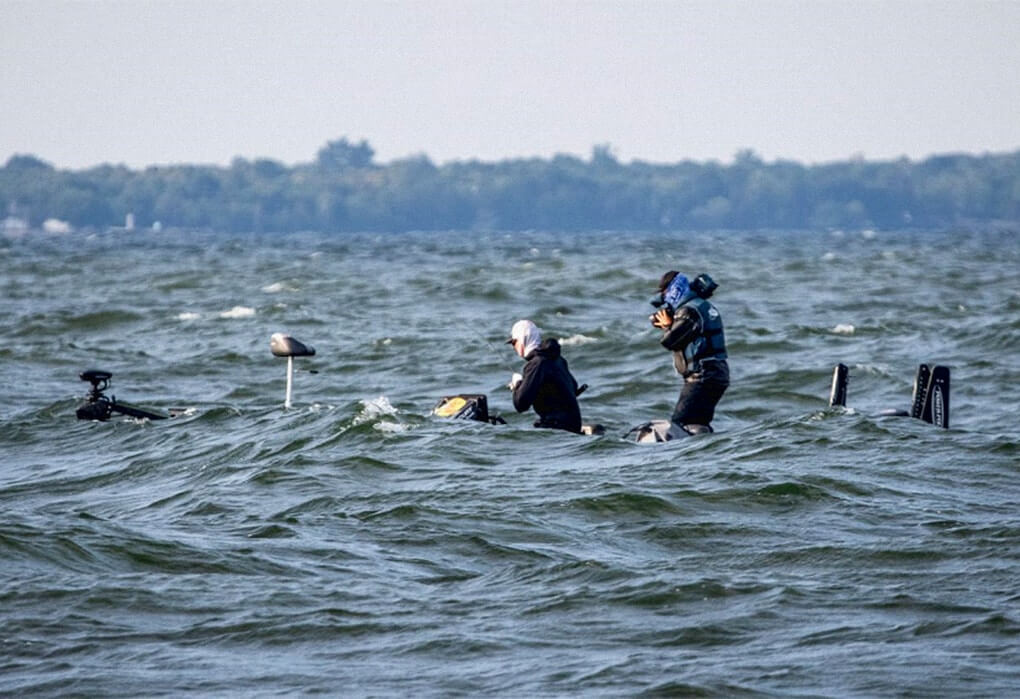
No, Josh Bertrand’s boat isn’t sinking. He is fishing in the swells on a windy day in a Bass Pro Tour tournament (photo by Kyle Wood/Major League Fishing)
The King of Drop Shot
When Bertrand took the championship in the WON Bass U.S. Open in October on Lake Mohave, no one was surprised to learn how he fished–with a drop-shot rig.
Bertrand had long perfected the finesse technique, which features a small weight tied to the end of the line and a small hook with a plastic bait positioned a short distance above it.
The idea is to fish the bait above the bottom, where it is visible to the bass and doesn’t get hung up in cover.
It is the most effective off-shore, fishing main-lake structure, such as points, humps, ledges, and rocks. Bertrand has fished the method since childhood and is good at it.
“When you live in Arizona and like to bass fish, you grow up with a drop-shot rod in your hands, “ Bertrand said. “You use it almost every day you’re out.”
Why is it so effective? Bertrand credits its life-like characteristics.
“It’s one of those techniques the bass never get tired of,” Bertrand said. “With other baits like the Alabama rig, the bass get wise to it pretty quickly.
“But for some reason, the drop shot still catches fish even on some of the most pressured lakes.”
Bertrand caught all of his bass in the U.S. Open on a drop shot with a Berkley MaxScent Flat Worm, one of his favorite baits, in 20 to 40 feet of water. He has won other tournaments with the same formula.
“It’s to the point where my goal is to win a tournament on something other than a drop shot,” he said. “But as long as I can catch them that way, I can’t complain.”
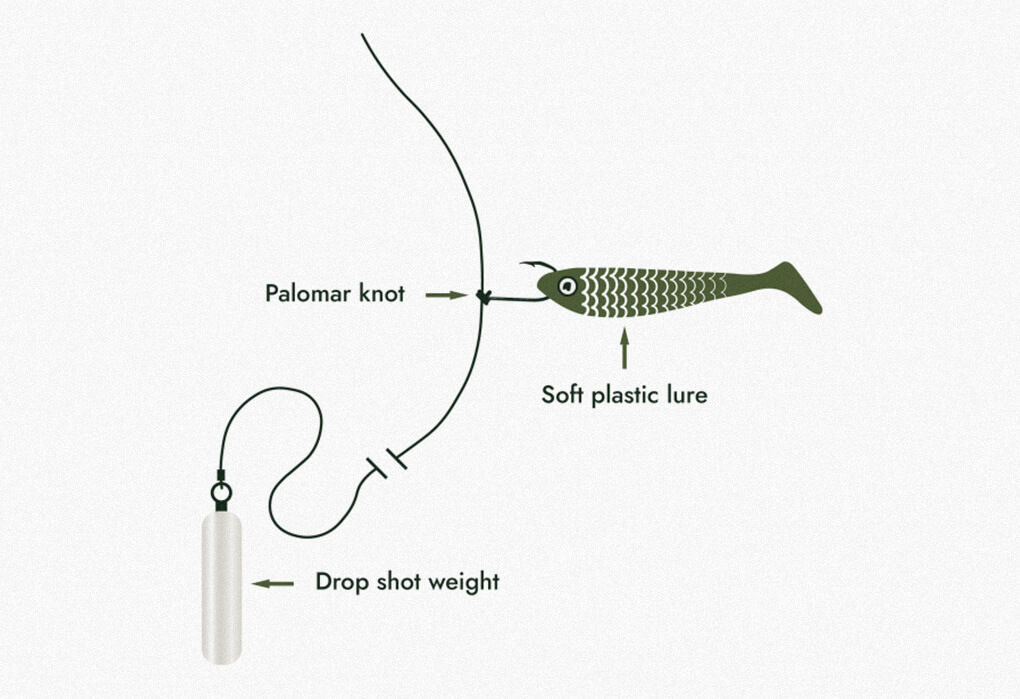
A typical drop-shot setup (illustration by YourBassGuy.com)
Bertrand’s Tips for Drop-Shot Equipment
Equipment is critical to performance when it comes to drop-shotting, Bertrand says.
He uses a 6-foot, 10-inch medium light Abu Garcia pro series spinning rod that he helped design.
“It’s really critical for feeling those subtle bites,” he said.
He also uses an Abu Garcia Revo spinning reel spooled with Berkley 8-pound-test braid. He ties a leader made of 6-pound Trilene fluorocarbon to that main line.
He ties a 3/16th- or ¼-ounce tungsten weight to that leader when he is fishing for largemouths. He will go to a heavier weight when fishing open water for smallmouths.
Bertrand will use a short leader for largemouths–8 to 10 inches. He uses a longer leader, two to three feet, for smallmouths.
Because Berkley sponsors him, he has no shortage of plastic baits to use on his drop-shot rigs. His favorite is the 3.6-inch Berkley MaxScent Flat Worm.
“I know that if it’s a smallmouth tournament and they’re on a drop-shot bite, that’s the only bait I need,” he said. “I don’t have to experiment with other baits.
“I’ll use a very slow presentation. I have caught a lot of fish dead-sticking it. I believe the bait’s scent and taste play a part.”
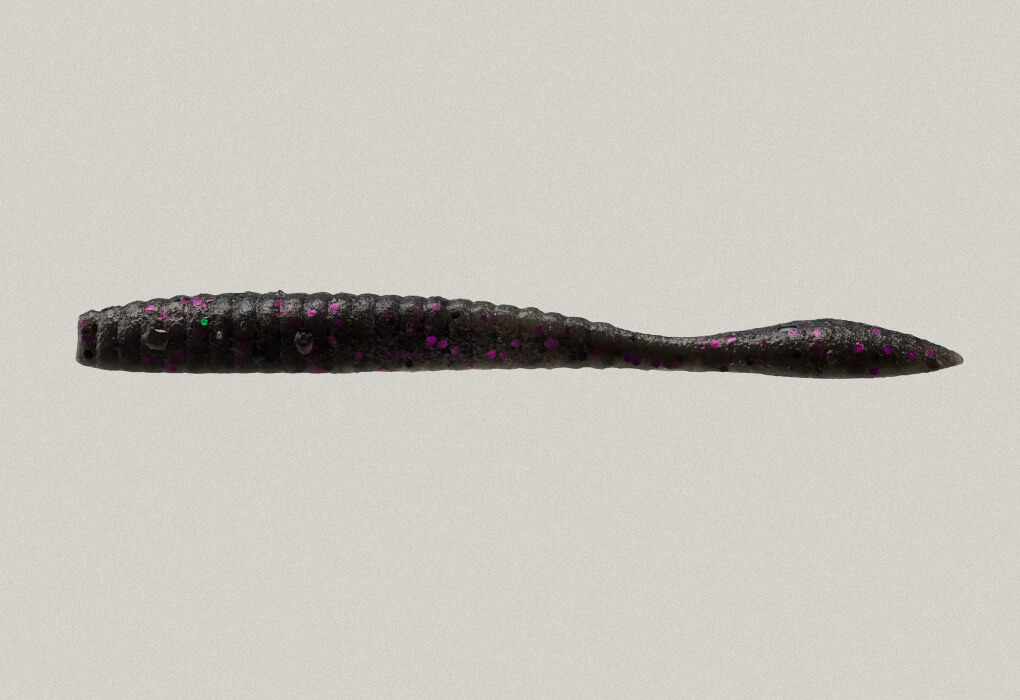
The Berkley PowerBait MaxScent Flat Worm
Man, That Smells Like Dinner
So, can bass smell their food?
Their sense of smell isn’t as refined as their eyesight or hearing. But fisheries biologists and researchers say they can indeed sniff out their prey.
That’s the premise behind Berkley’s MaxScent line of baits. The company had already rocked the fishing world by developing PowerBait to attract species such as catfish, crappies, and rainbow trout.
But it went one step further when it developed MaxScent for its plastic bass baits.
“You look at it in the package, and it’s not that impressive,” Bertrand said. “It doesn’t have that shiny look to it. It’s more of a dull appearance.
“It doesn’t look as pretty to the human eye, but I think it looks more natural to the fish. And I’m convinced that its scent makes a difference. “
Laboratory testing by Berkley and field studies led to the same conclusion. In fact, many top pros, such as Bertrand, have found impressive results using the baits in major tournaments.
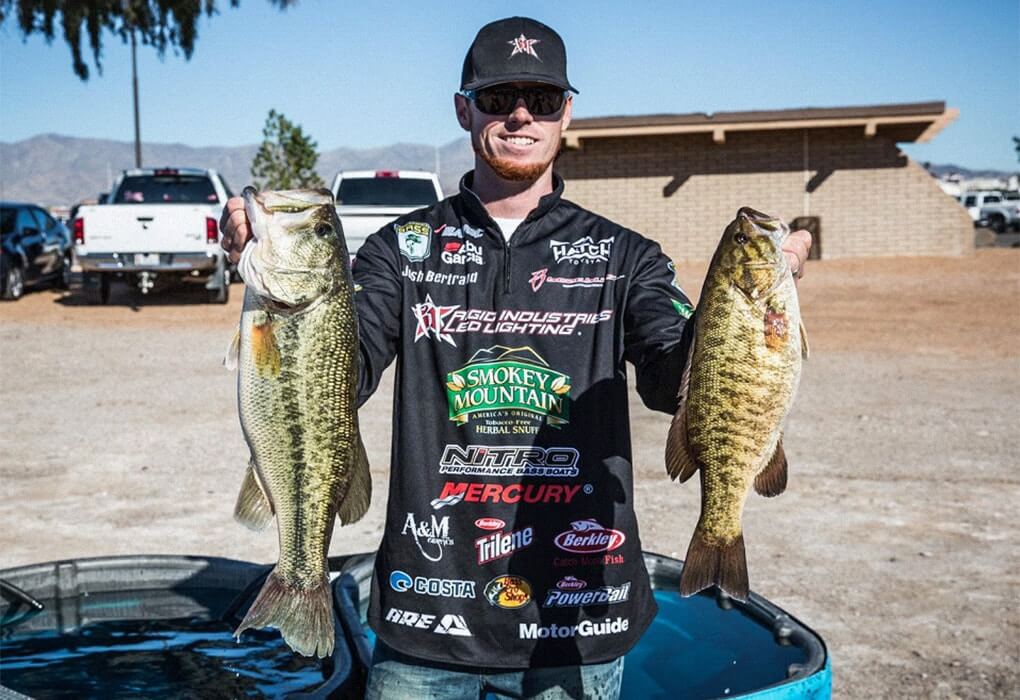
LiveScope has allowed Josh Bertrand to improve his offshore game for largemouth and smallmouth bass (photo by Matt Pace/Major League Fishing)
LiveScope Fishing
Forward-facing sonar has taught Bertrand plenty about offshore fishing.
He uses drop-shot rigs, suspending jerkbaits, and spy baits to catch suspended fish. His Garmin LiveScope unit, which shows the real-time movement of fish, allows him to see if his casts are in vain.
“LiveScope allows me to be much more efficient,” he said. “I can analyze a spot a lot quicker.
“I can see how the fish are reacting to my bait. In the past, I may have pulled up to a spot, made a few casts, and left.
“But with LiveScope, I might see them following my bait without hitting it. I know I’ll have to change my presentations or come back later.”
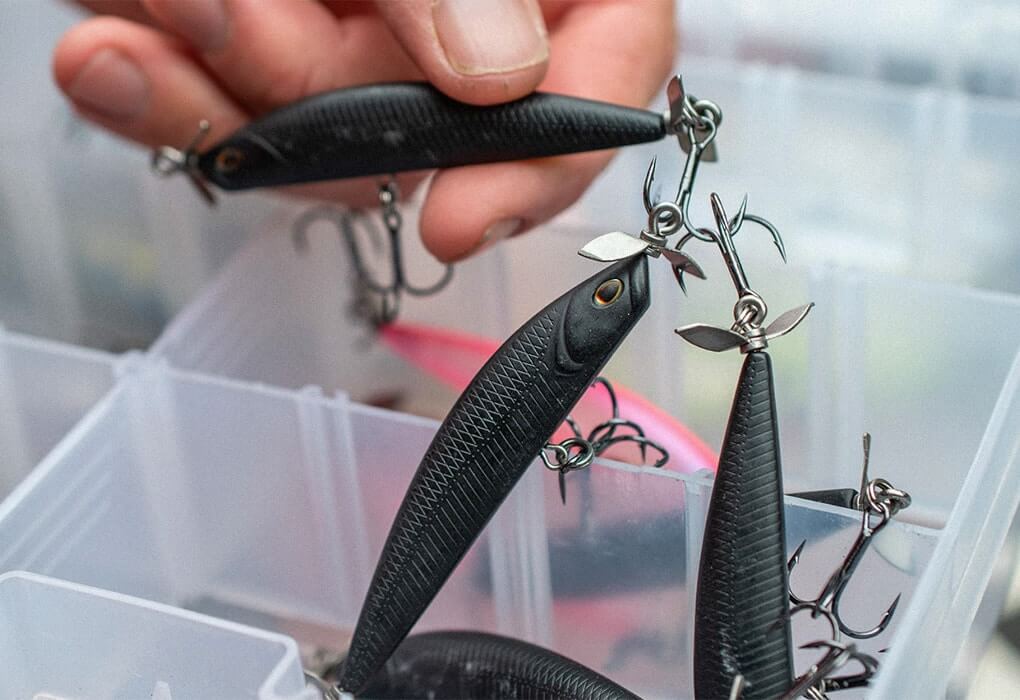
Spybaits are an option for suspended fish (photo by Garrick Dixon/Major League Fishing)
One More Tip
Bertrand often goes to a spy bait when the bass are suspended and the bite is tough.
The compact lure looks like a crankbait with propellers on both ends. Retrieved slowly, the flash of the spinners often triggers bass to bite.
“You can fish a spy bait in 20 to 30 feet of water, no problem,” Bertrand said. “It’s a great way to catch suspended bass you see on your electronics.”
Final Thoughts
If you haven’t tried a drop-shot rig yet, follow Bertrand’s advice and start experimenting with it.
You don’t need forward-facing sonar to catch fish. Use your electronics and find concentrations of baitfish with gamefish nearby.
Then use your drop shot with a plastic bait and work it slowly.
Chances are, you’ll catch bass and develop a new confidence technique.
Be sure to share your experiences with a drop shot in the comment section.
Until next time, good luck with your fishing.

